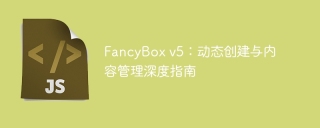How to use the Maven configuration file pom.xml
This time I will show you how to use MavenConfiguration filepom.xml, what are the notes of using Maven configuration file pom.xml, the following is a practical case, let's go together take a look.
<project xmlns="http://maven.apache.org/POM/4.0.0" xmlns:xsi="http://www.w3.org/2001/XMLSchema-instance"
xsi:schemaLocation="http://maven.apache.org/POM/4.0.0 http://maven.apache.org/maven-v4_0_0.xsd">
<modelVersion>4.0.0</modelVersion>
<groupId>com.troyforever</groupId>
<artifactId>example</artifactId>
<packaging>war</packaging>
<version>0.0.1-SNAPSHOT</version>
<name>example Maven Webapp</name>
<url>http://maven.apache.org</url>
<dependencies>
<dependency>
<groupId>junit</groupId>
<artifactId>junit</artifactId>
<version>3.8.1</version>
<scope>test</scope>
</dependency>
<dependency>
<groupId>mysql</groupId>
<artifactId>mysql-connector-java</artifactId>
<version>6.0.3</version>
</dependency>
<dependency>
<groupId>javax.servlet</groupId>
<artifactId>javax.servlet-api</artifactId>
<version>3.1.0</version>
</dependency>
<dependency>
<groupId>com.alibaba</groupId>
<artifactId>fastjson</artifactId>
<version>1.2.13</version>
</dependency>
<dependency>
<groupId>org.springframework</groupId>
<artifactId>spring-webmvc</artifactId>
<version>4.3.1.RELEASE</version>
</dependency>
<dependency>
<groupId>org.springframework</groupId>
<artifactId>spring-hibernate3</artifactId>
<version>2.0.8</version>
</dependency>
<dependency>
<groupId>javax.transaction</groupId>
<artifactId>jta</artifactId>
<version>1.1</version>
</dependency>
<dependency>
<groupId>javax.servlet</groupId>
<artifactId>jstl</artifactId>
<version>1.2</version>
</dependency>
</dependencies>
<build>
<finalName>example</finalName>
<plugins>
<plugin>
<groupId>org.apache.maven.plugins</groupId>
<artifactId>maven-compiler-plugin</artifactId>
<version>3.1</version>
<configuration>
<source>1.8</source>
<target>1.8</target>
<encoding>utf-8</encoding>
</configuration>
</plugin>
</plugins>
</build></project>I believe you have mastered the method after reading the case in this article. For more exciting information, please pay attention to the php Chinese website Other related articles!
Related reading:
Detailed graphic explanation of Switchery.js
The above is the detailed content of How to use the Maven configuration file pom.xml. For more information, please follow other related articles on the PHP Chinese website!
 FancyBox v5: In-depth guide to dynamic creation and content managementAug 27, 2025 am 07:57 AM
FancyBox v5: In-depth guide to dynamic creation and content managementAug 27, 2025 am 07:57 AMThis tutorial is designed to provide detailed instructions on how to dynamically create modal boxes and effectively manage their content in FancyBox v5. We will explore two main scenarios: one is how to correctly create inline type modal boxes and preset their contents when the program is running; the other is how to dynamically update their contents through the API provided by FancyBox after the modal boxes are displayed. The article will provide clear code examples and key considerations to help developers flexibly use FancyBox to achieve complex interactive needs.
 js check if element has classAug 27, 2025 am 07:05 AM
js check if element has classAug 27, 2025 am 07:05 AMThe most commonly used method is to use classList.contains(). 1. Modern browsers recommend using element.classList.contains('className'), which has concise syntax and clear semantics; 2. For browsers below IE10, you can use the compatibility function to check whether the class name exists through the '' element.className'' to avoid partial matching problems; 3. Avoid using element.className=='className' for congruent comparisons, because it will fail in multiple class names scenarios; 4. The regular method is accurate but complex, and is only used for special needs; Summary: Modern projects use classLis
 Extract a list of specified attribute values from an array of JavaScript objectsAug 27, 2025 am 06:27 AM
Extract a list of specified attribute values from an array of JavaScript objectsAug 27, 2025 am 06:27 AMThis article describes how to use JavaScript to extract the values of specific properties from an array containing objects and to form a new array. We will focus on the map() method, which provides a concise and efficient way to achieve this goal, and provides sample code and considerations to help you better understand and apply the method.
 How to handle browser events like click, mouseover, and keydown in JavaScriptAug 27, 2025 am 05:53 AM
How to handle browser events like click, mouseover, and keydown in JavaScriptAug 27, 2025 am 05:53 AMThe use of addEventListener() method is the recommended way to handle browser events. It allows binding event response functions for DOM elements to implement interactive functions; common events include click for button clicks, mouseover and mouseout (or more precise mouseenter and mouseleave) for hover effects, and keydown for keyboard input listening; best practices include using event delegates to process dynamic content, timely removal of unnecessary event listeners, and avoiding inline event handling functions, thereby improving the maintainability and performance of the code, and ultimately achieving efficient and manageable user interaction.
 how to select an element by data attribute in jsAug 27, 2025 am 05:46 AM
how to select an element by data attribute in jsAug 27, 2025 am 05:46 AMTo select elements through data attributes, use querySelector to select a single element, querySelectorAll to select multiple elements, and implement it through CSS attribute selector, such as document.querySelector('[data-id="myValue"]') to select all matches, use [data-enabled] to select elements with this attribute, support ^=, *=, $= and other matching methods, select ^=, select ^=, etc.
 DataTables tutorial: Use JavaScript array data to implement advanced column search functionAug 27, 2025 am 05:15 AM
DataTables tutorial: Use JavaScript array data to implement advanced column search functionAug 27, 2025 am 05:15 AMThis tutorial provides detailed instructions on how to initialize tables using JavaScript array data in DataTables and add interactive search filtering functions to each column. The content covers the matching of data and column definitions, dynamically generating table headers, and implementing the complete logic of column search boxes through initComplete callbacks, aiming to help developers build powerful searchable tables.
 Advanced TypeScript: Conditional and Mapped Types ExplainedAug 27, 2025 am 04:05 AM
Advanced TypeScript: Conditional and Mapped Types ExplainedAug 27, 2025 am 04:05 AMThe power of TypeScript lies in the combination of conditional types and mapping types. Conditional types realize type judgment through TextendsU?X:Y, and mapping types realize type transformation through [PinK]:T. 1. Conditional types can be used to extract function return values (such as ReturnType), filter joint types, and exclude null/undefined; 2. Mapping types can construct practical types such as Partial, Readonly, Pick, Record; 3. The combination of the two can realize advanced operations such as attribute read-only, method tags, and key remapping; 4. Infer is used to infer types, never automatically filter joint type members, and as can realize key name remapping. These characteristics are
 Dynamically build client content with Flask: A correct way to implement itAug 27, 2025 am 04:00 AM
Dynamically build client content with Flask: A correct way to implement itAug 27, 2025 am 04:00 AMThis article aims to help developers understand how to use the Flask framework to generate content dynamically on the server side and pass it effectively to the client for presentation while maintaining the client's interactiveness. The article will dissect a common error attempt and provide a correct solution based on the Response object and url_for function to achieve dynamic generation and playback of audio files, taking into account client page rendering.


Hot AI Tools

Undress AI Tool
Undress images for free

Undresser.AI Undress
AI-powered app for creating realistic nude photos

AI Clothes Remover
Online AI tool for removing clothes from photos.

Clothoff.io
AI clothes remover

Video Face Swap
Swap faces in any video effortlessly with our completely free AI face swap tool!

Hot Article

Hot Tools

VSCode Windows 64-bit Download
A free and powerful IDE editor launched by Microsoft

Dreamweaver CS6
Visual web development tools

Notepad++7.3.1
Easy-to-use and free code editor

ZendStudio 13.5.1 Mac
Powerful PHP integrated development environment

SAP NetWeaver Server Adapter for Eclipse
Integrate Eclipse with SAP NetWeaver application server.






